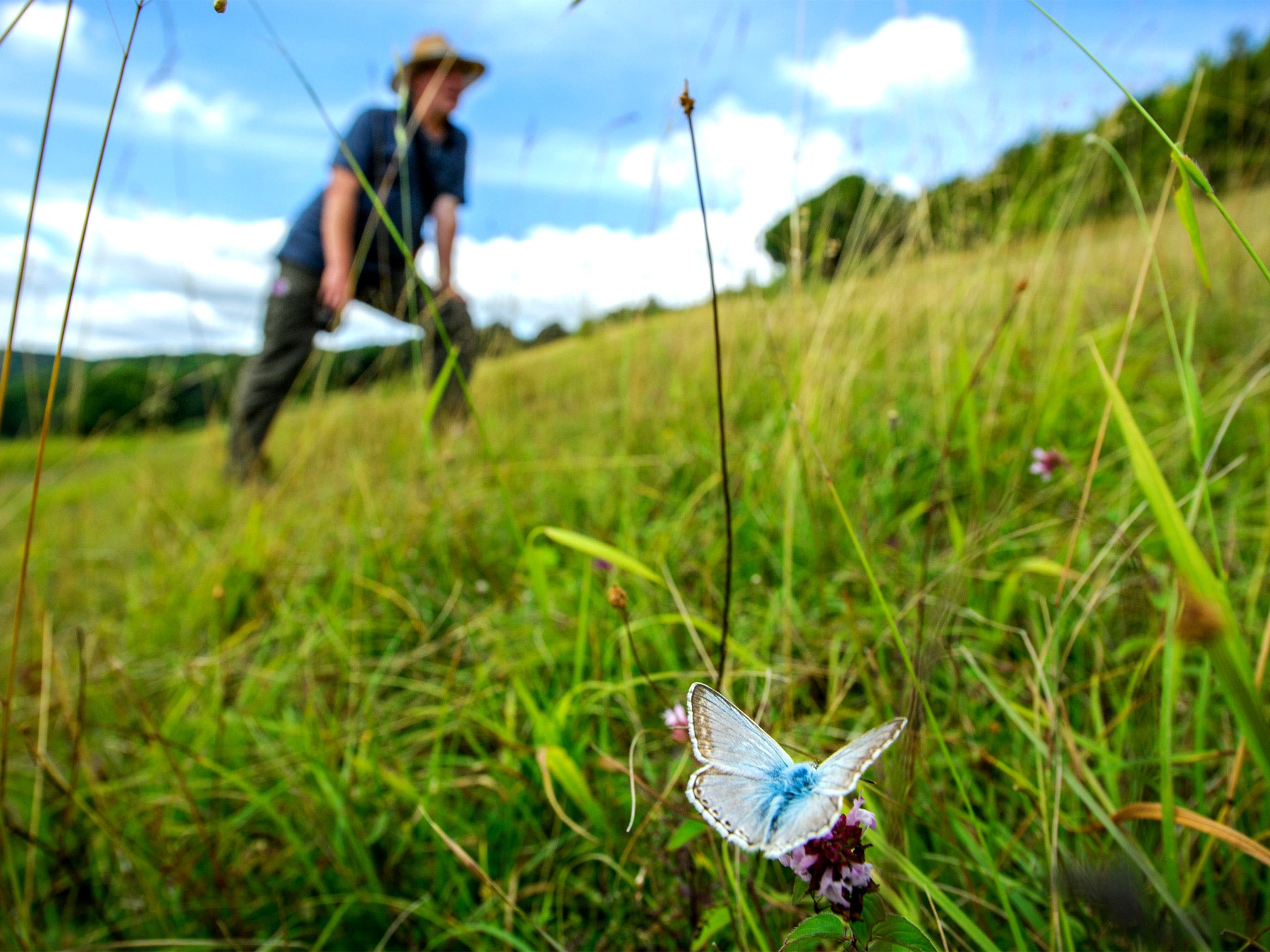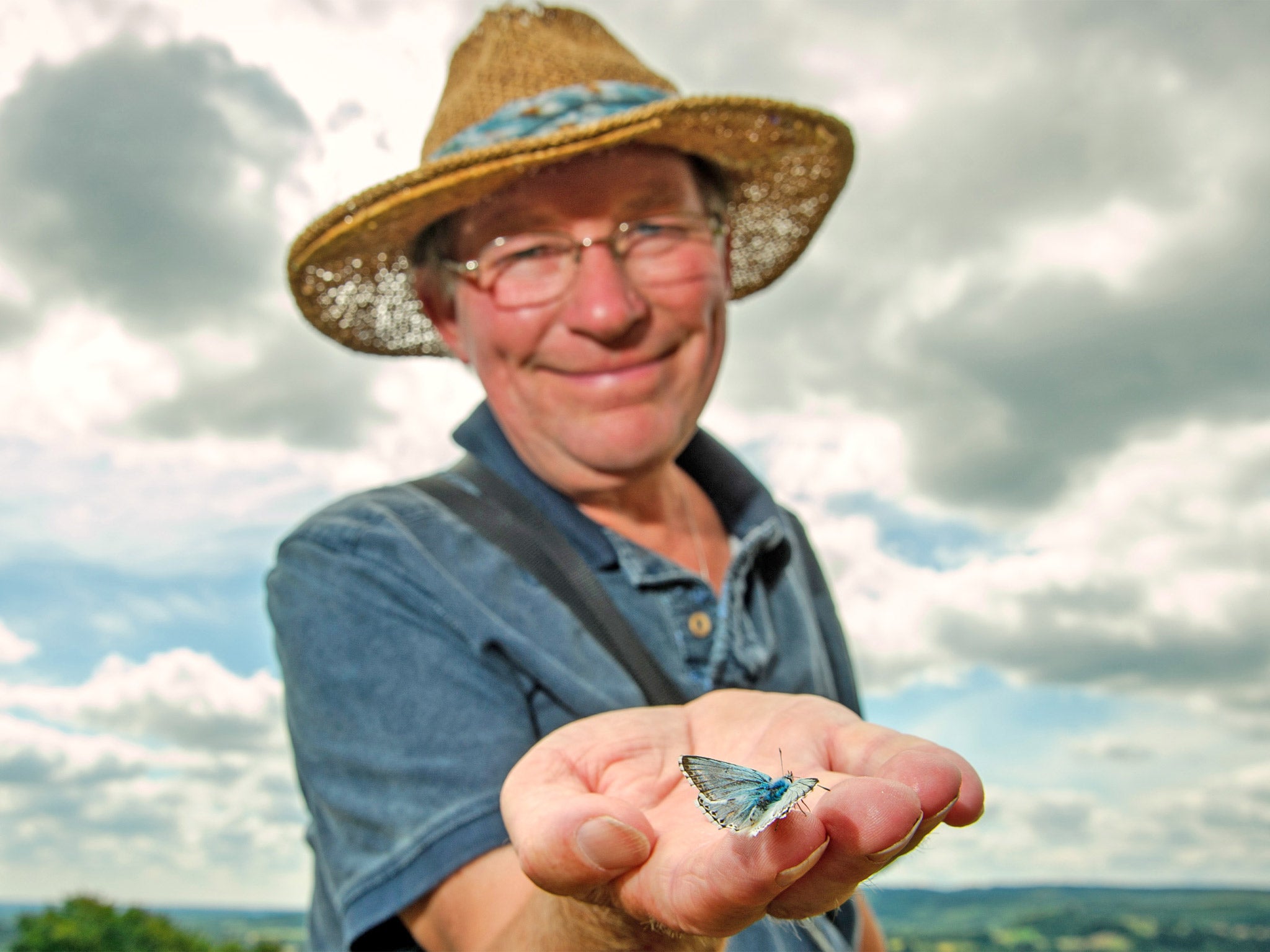Butterfly watchers of Britain, come out and spread your wings
Tom Bawden meets a leading lepidopterist who says the decline of prejudice has helped his hobby reach new heights

Your support helps us to tell the story
From reproductive rights to climate change to Big Tech, The Independent is on the ground when the story is developing. Whether it's investigating the financials of Elon Musk's pro-Trump PAC or producing our latest documentary, 'The A Word', which shines a light on the American women fighting for reproductive rights, we know how important it is to parse out the facts from the messaging.
At such a critical moment in US history, we need reporters on the ground. Your donation allows us to keep sending journalists to speak to both sides of the story.
The Independent is trusted by Americans across the entire political spectrum. And unlike many other quality news outlets, we choose not to lock Americans out of our reporting and analysis with paywalls. We believe quality journalism should be available to everyone, paid for by those who can afford it.
Your support makes all the difference.Butterfly watching has hit an all-time high in Britain, as a sharp decline in social prejudice towards interests perceived as weird or effeminate has allowed lovers of “the souls of summer hours” to come out of the closet.
That’s according to Matthew Oates, one of the country’s top butterfly specialists, who says social media has helped change attitudes, bringing together like-minded people and giving them a platform to share their ideas.
“A lot of social prejudices have dissipated recently, which helps eccentrics like me. I’m very grateful to the gay community for the idea of coming out, just being yourself. In my case, with butterflies,” said Mr Oates, of the National Trust, as he gave The Independent a tour of a favourite butterfly spot in the Surrey Downs.
“After 50 years I am allowed to love butterflies openly, without worrying about annoying people. I’m outed now. I mean, I’ve got four children, I like football and cricket, but immediately I became a weirdo because of butterflies,” said Oates, who turns 60 today.
The rise of the digital camera, able to take tremendous photographs relatively easily, and its proliferation through smart phones, has also played a role in raising the popularity of “butterflying” – as the hobby has long been known – along with increasing car ownership, he said. As a result its popularity has now eclipsed even its Victorian heyday, when train loads of people would travel to the New Forest to watch butterflies, muses Oates, admitting there are few numbers to back up his hypothesis.
Oates is particularly excited after a combination of the July heatwave and an abundance of nutritious horseshoe vetch has attracted the Chalkhill Blue butterfly in huge quantities.
“I’ve seen this hundreds of times but I’m still utterly wowed by it. We’re hard-wired to beauty and wonder and this fills me with wonder. It really gets the serotonin flowing, like your football team winning a crucial victory,” he said.
“This is an OMG! tweet. This is as good as it gets,” says Oates, declaring this to be one of the top ten butterflying days of his career, an event made all the sweeter by the absence of good butterflying weather in recent years.
Every inch a character, Oates uses a winning combination of football analogies and poetry to drive home his point that nature is sublime. Rarely seen without a hat, Oates is sporting a straw number encircled by a blue ribbon, which matches the Chalkhill Blues we have come to see.

“It’s like supporting your football club. I’ve got about 20 of these ribbons, bought from charity shops, but there are 60 species in the country so I’ve got some way to go. The Chalkhill Blue is like a lower premier league team, a good honourable team, in terms of its beauty and the interest people show in it,” said Oates an avid butterflyer ever since receiving a net on his tenth birthday.
Like Norwich City sort of level?
“Like Norwich City, yes. That’s exactly it. Actually, thinking about it, more like West Ham, though I don’t mean to be rude about Norwich,” he said. A 20-year veteran of the National Trust, Oates is in reflective form as he muses on his half century in the butterfly world.
After six disappointing years as the unseasonably cold and wet springs and summers took their toll on butterfly numbers, this summer is on course to be the best since 2006.
“Butterflies are so sensitive to the weather. Caterpillars too. Eggs in the hot weather hatch more quickly and the caterpillar grows more quickly, which makes it less likely to get eaten by something nasty,” he said, stopping to admire a dog turd hosting about 10 of his beloved Chalkhill Blues.
Looking further back, Oates says nearly all butterfly species have seen dramatic changes in the past five decades. “For some it seems their ecology has changed almost entirely. Sadly, there have been more losers than winners during my career, with Dutch Elm disease, woodland clearance, intensive agriculture, urbanisation and a changing climate all playing their part,” said Oates.
“In the next 50 years, climate change is likely to affect butterflies massively, although we have no idea how. You won’t find an experienced butterflyer who doesn’t believe in climate change. There will be even more winners and losers with new species likely to colonise from abroad and established UK species suffering.”
He is especially concerned that Britain’s rising population is putting butterfly habitat at risk by pushing up the financial value of the land. But despite witnessing a considerable decline in butterfly numbers in the past 50 years, Oates insists that he is optimistic for Britain’s butterfly future. The fact that people no longer seem to get much pleasure out of killing butterflies is also helping, with people keen to picture rare butterflies rather than put them on display.
For Oates, butterflies are a religious experience. “I can’t be secular in this, I’ve tried. I’m like Voltaire who can’t believe in the clock without the clock maker,” he says, before switching to another poet – Wordsworth – to round off one of the best butterfly days of his life.
“‘What we have loved others will love, and we may teach them how’. That’s a good mantra. Otherwise it’s a bit OCD, taking, taking, taking. I want to share that, I want other people to be wowed.”
Natural selection
The winners...
The Silver-spotted Skipper
(Hesperia comma): was in dire straits in the 1970s, when the rabbits that maintained their short-grass habitat were hit by myxomatosis. Encouraged back through conservation and a recovery of rabbit populations, they are recovering extremely well.
The Large Blue
(Maculinea arion): declared extinct in the UK in 1979 with the last sighting on Dartmoor in Devon. However, it was reintroduced from Sweden and is doing well.
... and losers
The Wall Brown
(Lasiommata megera): this used to be common along road verges, woodland rides and rough grassland but started to disappear mysteriously in the mid-1980s.
The White-letter Hairstreak
(Satyrium w-album): this species collapsed as a result of Dutch elm disease in the 1970s.
Join our commenting forum
Join thought-provoking conversations, follow other Independent readers and see their replies
Comments